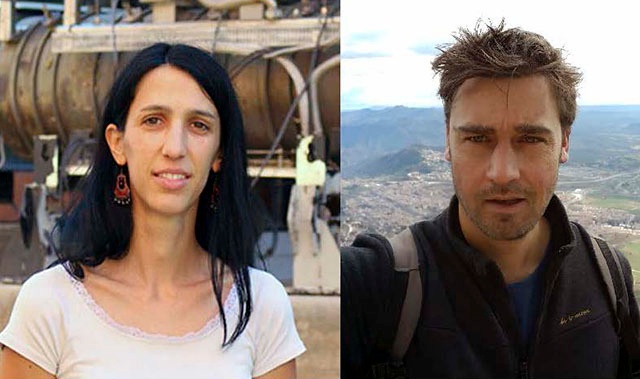The European Research Council (ERC) has just approved two Starting Grants to Paola Ferrario, researcher from the Institute of Corpuscular Physics (UV-CSIC) and to Jochem Verrelst from the Image Processing Lab (LPI) of the Universitat de València, both in the Science Park. The grants are destined to develop, on the one hand, a new medical diagnosis system, and on the other hand, a European installation, in the field of Earth Observation, to monitor the vegetation’s productivity. Each project has been provided with 1.5 million euros for a period of 5 years.
Paola Ferrario’s Project -PETALO- is aimed to develop a new system of tomography by a positron emission (PET) based on liquid xenon instead of the current technology of scintillator crystals. This new mechanism will significantly improve the measurement of the ‘flight time’ of the particles which are emitted by the patient. It will increase the system’s sensitivity and it will allow the development of smaller and more economical devices.
PETALO (positron emission device based on liquid xenon with applications on the flight time) is based on the technology developed for the Xenon NEXT detector, an international project lead by the IFIC which hopes to bring some light to one of the strangest processes that, theoretically, happens in the nature: the double beta decay without neutrinos.
While NEXT expects to create a collision between particles and antiparticles, PETALO will do the same with the positrons emitted in medical diagnosis tests with PET scanners. This system involves an inoculation of a radioactive substance in the patient so that the positrons collide with their antiparticle, the body’s electrons, and then emit two photons that are detected by crystals that light up (twinkle) as it goes. Then the signal is reconstructed, obtaining an image as it happens of the inside of the patient.
According to Ferrario’s team calculations, PETALO supposes a ‘revolution for the PET technology, increasing the system’s sensitivity’. Moreover, ‘the lower cost of xenon, compared to scintillator crystals will, on the one hand, reduce the price and improve the results of the PET scanners for the whole body, and on the other, develop smaller scanners to study organs such as the brain’, states the researcher.
The objective of this first phase of PETALO financed by the ERC is to prove the running of the technology through several prototypes with two detectors of liquid xenon. The next phase will develop the construction of a whole ring of detectors and an algorithm for the image reconstruction, applied to a cerebral scanner.
Monitoring the agricultural production from the satellite
The second project is related to the global concern of food security. The agricultural production suffers a rising pressure due to global anthropogenic changes, including the population’s increase, the protein’s demand increase and the climatic extremes. Due to the inmediat and dynamic effect of these changes, Europe has expressed the urgency of stablishing monitoring measures of the agricultural production in order to guarantee the stability and the rise of the global food supply.
In response to this, the SENTIFLEX project which is led by the researcher Jochem Verrelst from the Earth Observation Laboratory, in the LPI, is developing an European vegetation productivity monitoring facility based on the synergy of Sentinel-3 -the European Space Agency's (ESA) planet monitoring mission- with FLEX satellite fluorescence data. The 8th Earth Explorer FLEX of the ESA is the first mission specifically designed to measure globally the chlorophyll fluorescence (SIF) induced by the Sun of the terrestrial vegetation. These two European missions to observe the Earth offer a wide range of possibilities about knowing the basic functioning of the Earth’s vegetation; that means, the photosynthetic activity of the plants which lead to the carbon fixation.
The project foresees two supplementary perspectives to count the photosynthesis through a satellite. Firstly, SENTIFLEX seeks to unravel the dynamic vegetative and atmospheric variables. Secondly, it is expected to construct an FLEX-S3 data processing assimilation scheme through vegetation models based on processes that will provide spatiotemporal information on the productivity of vegetation in Europe. All these data combination will become a prototype of surveillance installation of the agricultural productivity. Eventually, the monitoring installation will be used by the vegetation dynamic systems and the crops’ growth.


